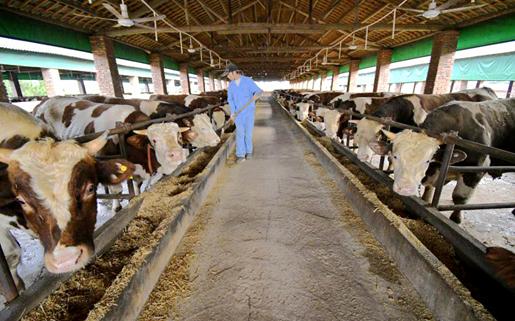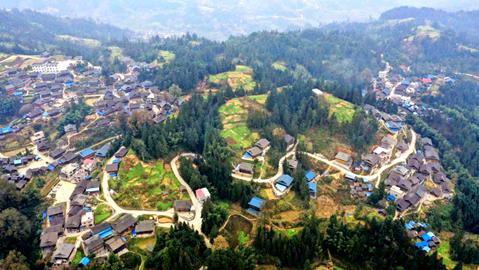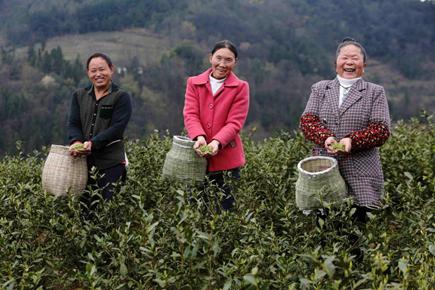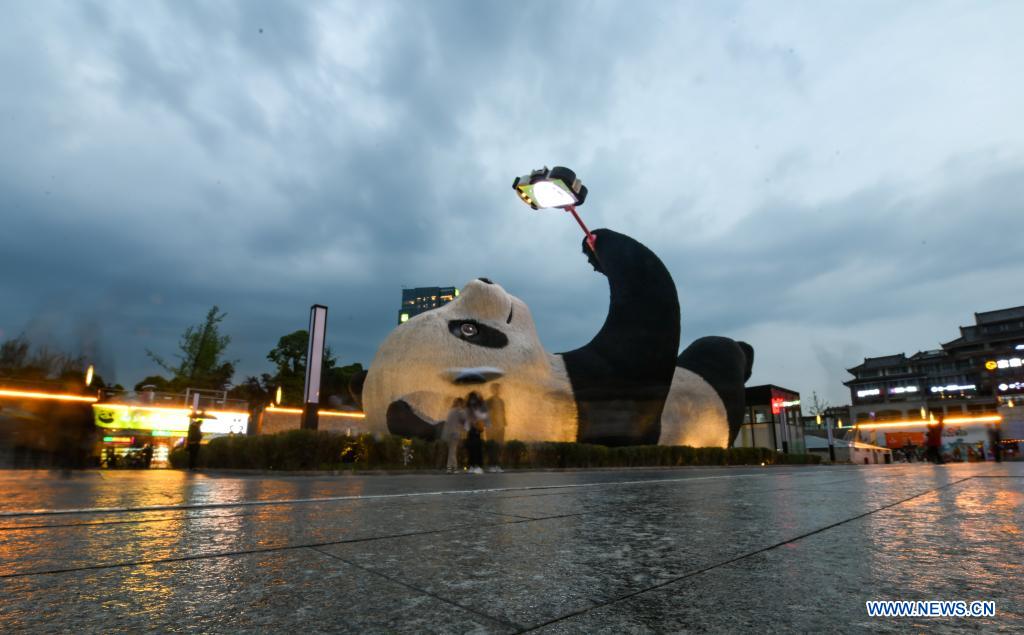China lifts 770 million rural people out of poverty: white paper
More than 770 million of China's rural population living below the current poverty line have been raised from poverty, accounting for more than 70 percent of the global total over the same period according to the World Bank's international poverty standard, says a white paper recently released by the State Council Information Office of China.

A man checks the cows at a breeding base in Jinxi County, Fuzhou, east China's Jiangxi Province, Nov. 3, 2020. The county has vigorously developed cattle farming to lift local people out of poverty. (People's Daily Online/Deng Xingdong)
Through China's poverty eradication practices, the country has embarked on a path of poverty alleviation and designed an approach with Chinese characteristics, which offers enlightenment to the international community in its battle to reduce poverty, said Xu Lin, deputy head of the Publicity Department of the Communist Party of China (CPC) Central Committee and minister of the State Council Information Office of China at a press conference to mark the launch of the white paper titled "Poverty Alleviation: China's Experience and Contribution."
China's fight against poverty entered a critical stage after the 18th CPC National Congress in 2012. At the end of 2020, through eight years of hard work, China achieved the goal of eliminating extreme poverty – a key goal for the new era of building socialism with Chinese characteristics.
The 98.99 million people in rural areas who were living below the current poverty threshold all shook off poverty; all the 128,000 impoverished villages and 832 designated poor counties got rid of poverty. China has eliminated poverty over entire regions in 14 contiguous poor areas across the country.

Photo taken on Dec. 26, 2020 shows a hardened road built in Gaowu village, Qiandongnan Miao and Dong Autonomous Prefecture, southwest China's Guizhou Province. (People's Daily Online/Li Changhua)
The incomes of the impoverished are increasing. The per capita disposable income of the rural poor increased from 6,079 yuan ($928) in 2013 to 12,588 yuan in 2020, up by 11.6% per annum on average.
China's poverty-stricken areas have got rid of backwardness. The lack of access to transport, electricity, drinking water and communications, which hindered the development of these areas for years, has been put to an end for good.
Targeted measures are a golden key to winning the fight against poverty, as well as the most symbolic innovation in this round of poverty alleviation efforts, said Xia Gengsheng, deputy head of the national administration for rural vitalization.
China started creating a national database of impoverished households in 2014, and reviewed it between Aug. 2015 and June 2016, during which it removed those unqualified from the database and added those who newly became eligible. Since 2017, the database has been renewed annually for more targeted poverty alleviation.
China's standards for deregistering those who have emerged from poverty are comprehensive, including income, and the extent to which they are assured the rights to subsistence and development. In general, these standards are higher than those defined in the World Bank extreme poverty line, as well as those in The 2030 Agenda for Sustainable Development released by the United Nations in 2015.

Villagers pick tea leaves at a poverty alleviation plantation in Shuangshi village, Zhongtang Township, Qianjiang District, southwest China's Chongqing Municipality, March 11, 2021. (People's Daily Online/Yang Min)
According to statistics, the per capita net income of China's registered poor residents reached 10,740 yuan at the end of the last year, which was much more than the international extreme poverty line.
Following the victory in the final battle against extreme poverty, China will continue to consolidate the results of poverty elimination, and dovetail new measures with rural revitalization, the white paper says.
Next, China will work to ensure food security, said Tang Renjian, director of the Office of the Central Leading Group for Rural Affairs and Minister of Agriculture and Rural Affairs.
The country will ensure that its annual grain output is maintained at over 650 billion kilograms in the next five years, and strive for steady growth. It will maintain steady supportive policies in areas that have emerged from poverty, and offer supports to a range of counties in western regions.

An annual apricot blossom festival kicks off in Xinyuan County, Ili Kazakh Autonomous Prefecture, northwest China's Xinjiang Uygur Autonomous Region, April 10, 2021. (Photo/Zhou Gen)
Relying on the different functions of agriculture and countryside, the country will develop new business forms and industries that involve a wider range of farmers and bring them more benefits.
More villages and rural households in China will be covered by public infrastructure facilities, and roads will be built for better development of industries, resources, and tourism. The warehousing and cold-chain logistics will also be enhanced. Meanwhile, China will improve public service in rural areas and enhance rural governance, so as to bring more changes to the countryside.
"Employment is an important channel for income growth. Steady employment guarantees stable income for those who have been raised from poverty," said Xia. This year, China has set a target to create at least 30 million jobs for this group, and now the target is in smooth progress given what has been done to encourage working out-of-town and in the creation of local jobs, he introduced.
The white paper says that by 2035, China will have achieved basic socialist modernization. With decisive progress in rural revitalization by that time, agriculture and rural areas will be modernized and fundamentally restructured. Farmers will benefit from the quality employment which comes with better jobs, and relative poverty will be further alleviated.
Photos
Related Stories
- A Path Forward
- China sets role model for global poverty reduction
- Camellia oleifera lifts environment, brings economic benefits to residents in central China
- How China has lifted nearly 800 mln people out of poverty
- Xi's remarks on China's poverty alleviation
- Poverty Alleviation: China's Experience and Contribution
- China issues white paper on poverty alleviation
- China's poverty reduction "inspiring experience," say experts
- China: A role model for global poverty alleviation
- Interview: China's experience in poverty fight helps Afghanistan to end war: expert
Copyright © 2021 People's Daily Online. All Rights Reserved.










